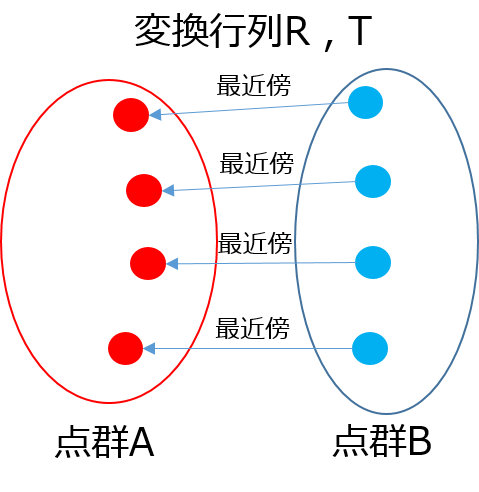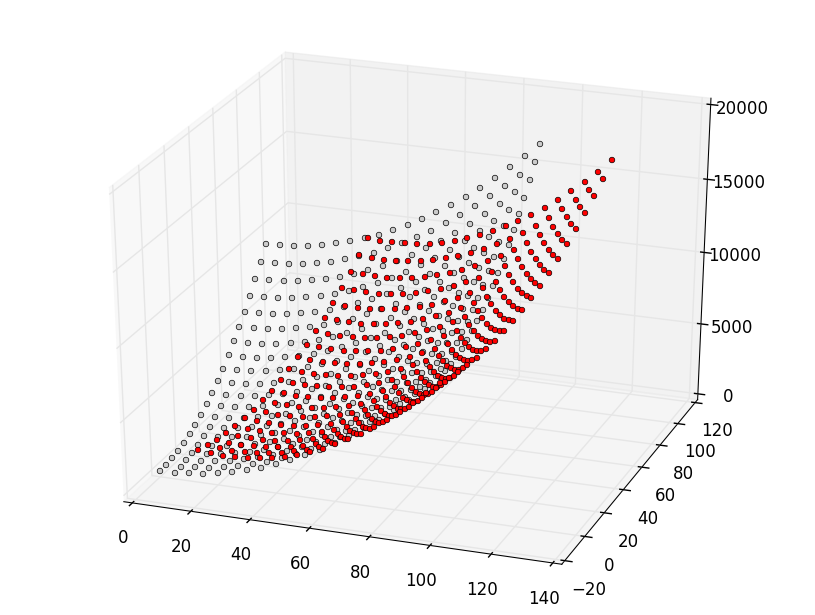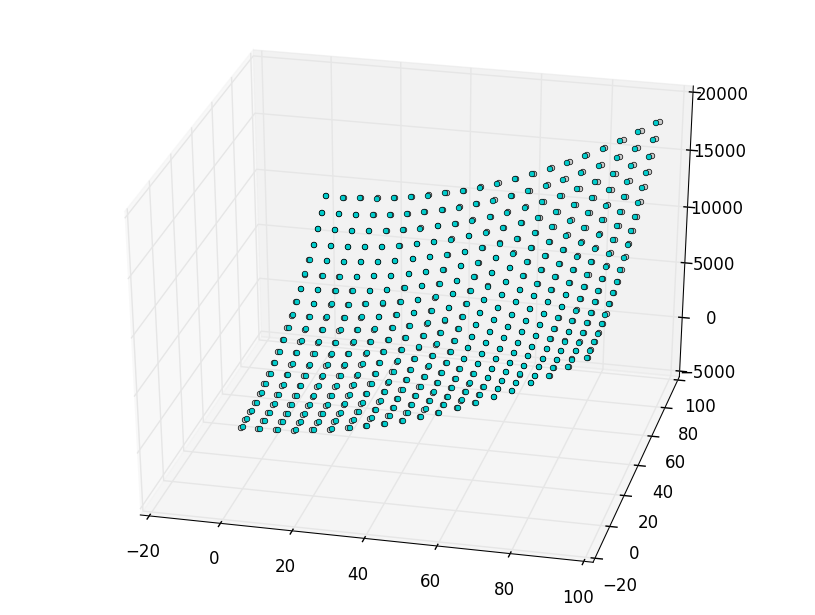Iterative Closest Point を試してみた
今回はIterative Closest Point(ICP)アルゴリズムを試してみました.ICPは点群Aと点群Bが与えられた際に点群Bを回転と平行移動させて点群Aに位置合わせするためのアルゴリズムだそうです。
具体的なアルゴリズムは以下の通り。
- 点群Bの各点について点群Aの中から最近傍の点を見つける。
- 点群Bの各点とAの各点が対応しているので、各対応点に移るような変換行列を計算する。
- 変換行列を使ってBを写像する。
- 指定回数分もしくは収束するまで以上の処理を繰り返す。

ソースコード
各ステップでの回転行列と平行移動行列の計算は以下のコードで計算しました.コードの詳細は以下のサイトを参照のこと.Finding optimal rotation and translation between corresponding 3D points | Nghia Ho
def calcRigidTranformation(MatA, MatB): A, B = copy(MatA), copy(MatB) centroid_A = mean(A, axis=0) centroid_B = mean(B, axis=0) A -= centroid_A B -= centroid_B H = dot(A.T, B) U, S, V = linalg.svd(H) R = dot(V.T, U.T) T = dot(-R, centroid_A) + centroid_B return R, T
ICPのコードはこちら
from scipy.spatial import KDTree import numpy as np from math import sin, cos class ICP(object): def __init__(self, pointsA, pointsB): self.pointsA = pointsA self.pointsB = pointsB self.kdtree = KDTree(self.pointsA) def calculate(self, iter): old_points = np.copy(self.pointsB) new_points = np.copy(self.pointsB) for i in range(iter): neighbor_idx = self.kdtree.query(old_points)[1] targets = self.pointsA[neighbor_idx] R, T = calcRigidTranformation(old_points, targets) new_points = np.dot(R, old_points.T).T + T if np.sum(np.abs(old_points - new_points)) < 0.000000001: break old_points = np.copy(new_points) return new_points def icp_test(): Y, X = np.mgrid[0:100:5, 0:100:5] Z = Y ** 2 + X ** 2 A = np.vstack([Y.reshape(-1), X.reshape(-1), Z.reshape(-1)]).T R = np.array([ [cos(50), -sin(50), 0], [sin(50), cos(50), 0], [0, 0, 1] ]) T = np.array([5.0, 20.0, 10.0]) B = np.dot(R, A.T).T + T icp = ICP(A, B) points = icp.calculate(3000) from matplotlib import pyplot from mpl_toolkits.mplot3d import Axes3D fig = pyplot.figure() ax = Axes3D(fig) ax.set_label("x - axis") ax.set_label("y - axis") ax.set_label("z - axis") ax.plot(A[:,1], A[:,0], A[:,2], "o", color="#cccccc", ms=4, mew=0.5) ax.plot(points[:,1], points[:,0], points[:,2], "o", color="#00cccc", ms=4, mew=0.5) ax.plot(B[:,0], B[:,1], B[:,2], "o", color="#ff0000", ms=4, mew=0.5) pyplot.show() icp_test()
出力結果


灰色の点が元々の点群Aで,赤いのがそれを変換した点群Bです.黄緑色の点はBをAに位置合わせしたもので,ちゃんと重なっていることが分かります.